Does your fruit, nut, or shade tree have weird growths on its trunk or limbs?
There are two main reasons for this. One is that they are burr knots or burls. Your tree is confused and growing root tissue on its limbs.
The other reason is due to a bacterial infection that causes tumors to be produced. The disease is called crown gall and could mean the death of your tree.
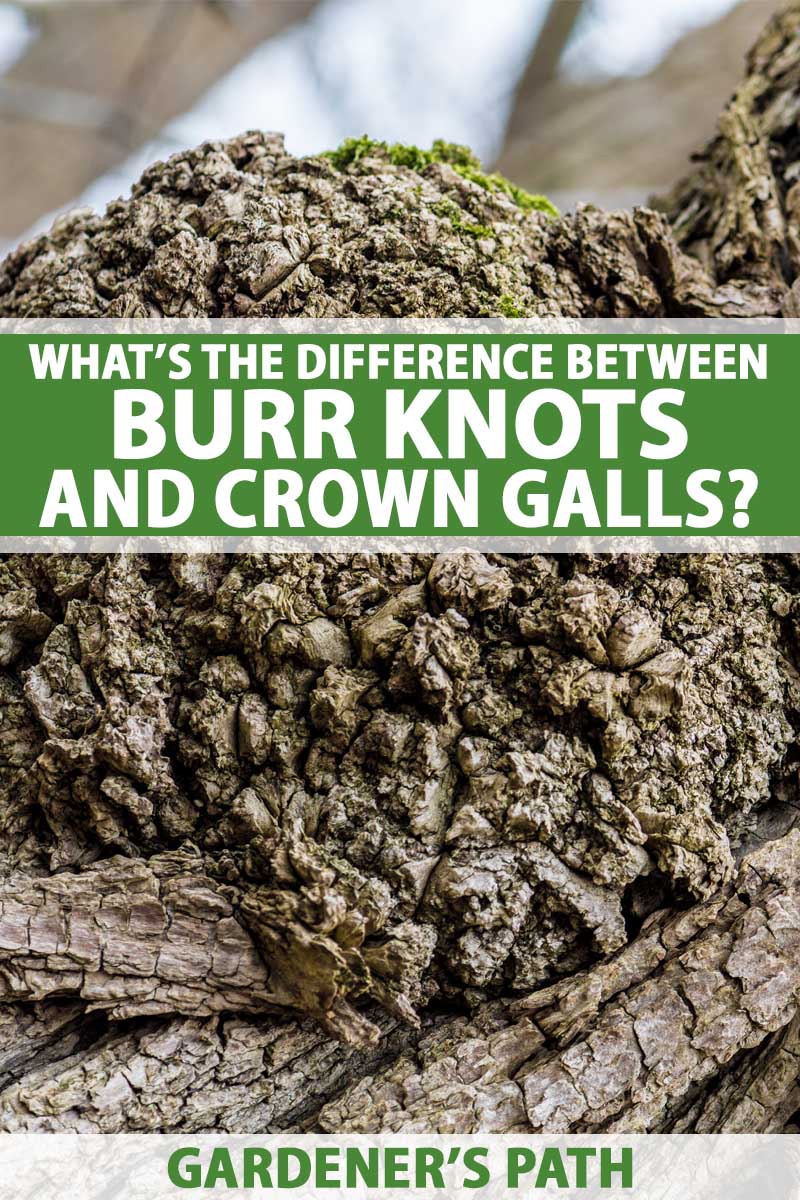
We link to vendors to help you find relevant products. If you buy from one of our links, we may earn a commission.
Read on to find out how to distinguish the two and what to do if the trunk or limbs are disfigured in this manner.
What You Will Learn
Burr Knots
While these growths may look like tumors, they are actually due to small root initials. Burr knots are typically found on the rootstock, but some scion cultivars can develop them on the limbs.
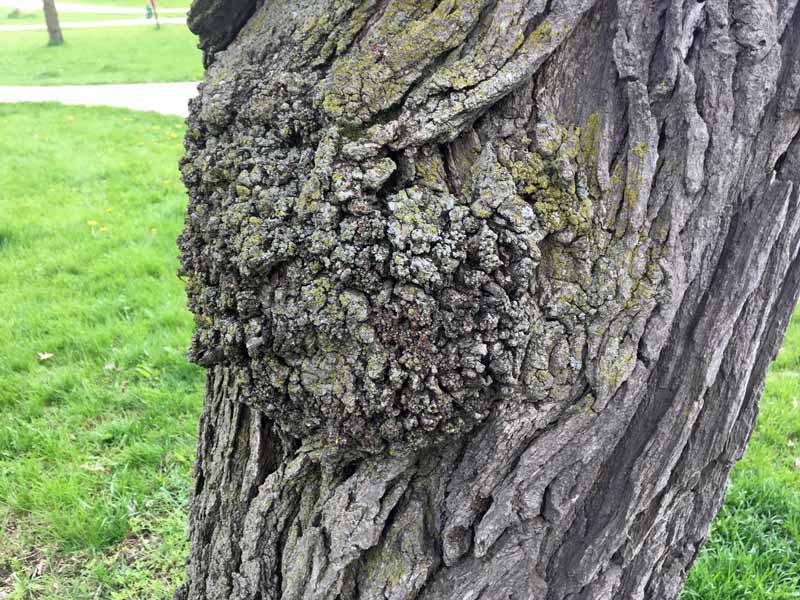
During the first year of growth, this tissue can grow in shady portions. High humidity and moderate to warm temperatures favor the growth of root initials.
They can break through the epidermis during the second year of growth. As the tree matures, they keep growing and form increasingly large knots.
Problems Associated with Burr Knots
Burr knots can cause several problems. First, they are prone to breakage under a large crop of fruit or nuts, under an ice or snow load, or when a windstorm strikes.
Second, if several burr knots grow together, they can stunt growth by limiting the phloem. If this happens, less sugar is transported to the area impacted by the knots. This part of the tree will fail to thrive.
And most frighteningly, they provide a way for insects and pathogens to enter the woody vegetation and fester inside of it. Many fruit trees, for example, can be infected by woolly apple aphids, dogwood borers, and plum borers.
And if that isn’t bad enough, fire blight or fungi that rot wood can enter through the burr knots and then spread throughout the vegetation.
Prevention and Control
If burrs do develop, you can cut them out if there are only a few of them. There is also a product called Gallex that you can paint on the knots. At least some of them will form a callus and heal.
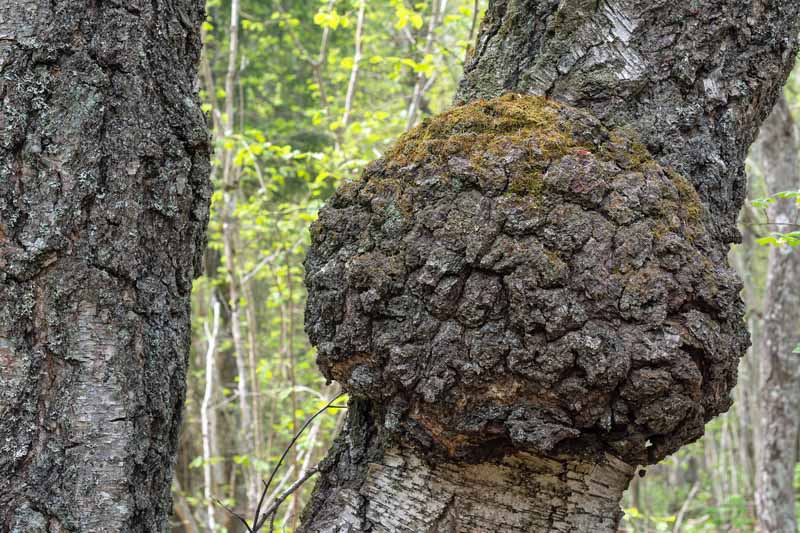
Your best bet is to try to prevent them from forming in the first place. When you plant, make sure that the graft union is just above the soil and remains there after it has settled.
You should do everything you can to keep the trunk dry. This includes keeping vegetation from growing under the canopy during the growing season. Also, avoid using tree guards.
Crown Gall
You can recognize when the growths are due to crown galls because they look like overgrown warts. The galls range in size from one half inch to more than one foot in diameter. They start out light-colored and then turn dark as the galls harden.
The galls typically form on the roots and crown, but they can form on the stems.
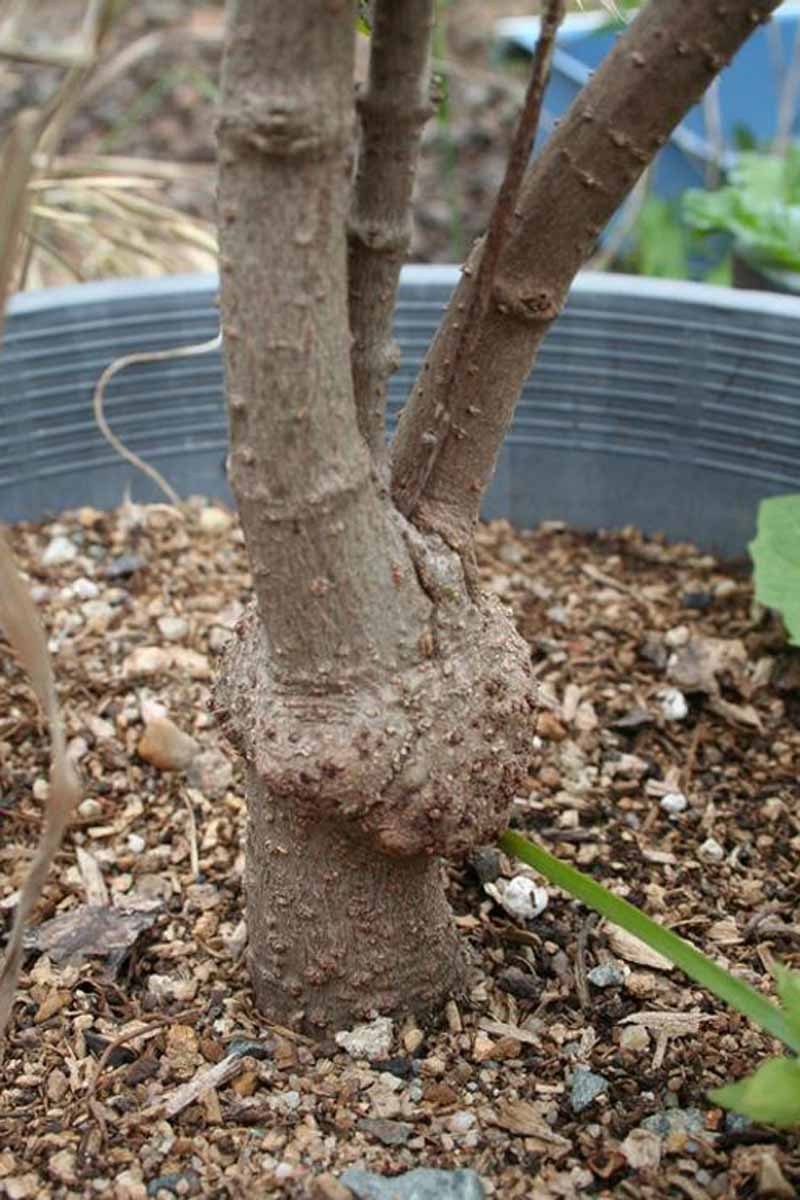
These growths are literally tumors. They are caused by bacteria in the soil called Agrobacterium tumefaciens. These bacteria inject their DNA of the plant in the form of plasmids in a natural form of genetic engineering.
Hormones made by the bacterial DNA causing the uncontrolled growth that will become the galls. When this phenomenon was first discovered, scientists studied them thinking that they might provide clues for the growth of human cancers. They did not.
These galls limit the flow of water and nutrients. The vegetation responds with reduced growth and symptoms of decline.
How to Avoid Crown Gall
It is hard to avoid these bacteria. They are common in nurseries and infect a tremendous variety of plants, so they are found in many soils.
Thousands of species of plants are vulnerable, but particularly susceptible are members of the rose family (Rosaceae), which besides roses, includes fruit trees such as apples and crabapples, pears, peaches, plums, nectarines, apricots, cherries, pecans, and quince.
Various nut and shade trees, woody shrubs and vines, and many flowering perennials are also at high risk.
In this case, an ounce of prevention is worth a pound of cure.
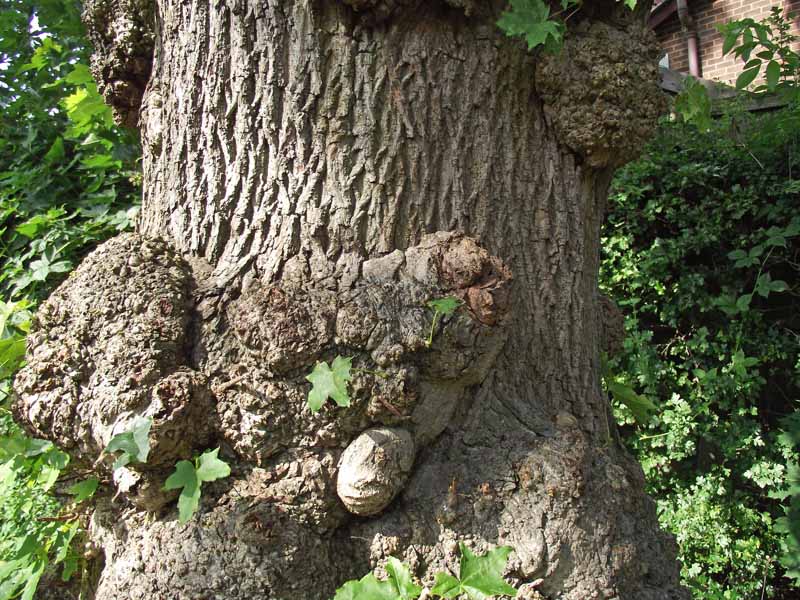
The bacteria can enter through wounds, so be careful when you cultivate around the crown and the surface roots.
Any injury can provide a point of entry – pruning, frost injury, and growth cracks. Try and control insects that feed on the roots, too, since insect damage can provide another way for the bacteria to infect vegetation.
Control Mechanisms for Crown Gall
An infected plant may die. You might be able to slow down this process by painting the galls above the ground with paint that contains antibiotics.
Gallex can inhibit the additional development of galls. Remove the soil from around the galls and make the sure the area is dry before you use this compound.
In many plants, you can often prevent infection during planting by dipping the crown and roots in a solution of closely related bacteria, Agrobacterium rhizogenes, which will outcompete Agrobacterium tumefaciens. However, that strategy often does not work unless the numbers of bacteria in the soil are really low.
If you do have to remove your tree, dig up the stump and roots and burn them. You should wait a few years to plant any susceptible species in that area. Growing a rotation of grass for several years may help to cleanse the soil.
More Than Just Unsightly Growths
In addition to looking unsightly, both burr knots and crown galls can seriously damage.
In the case of burr knots, much of the damage is secondary. Insects and pathogens may gain the foothold they need to devastate not only the woody portions, but also the leaves and young green growth. Crown gall can kill outright, although you may be able to limit the damage. Gallex is always an option in both cases.
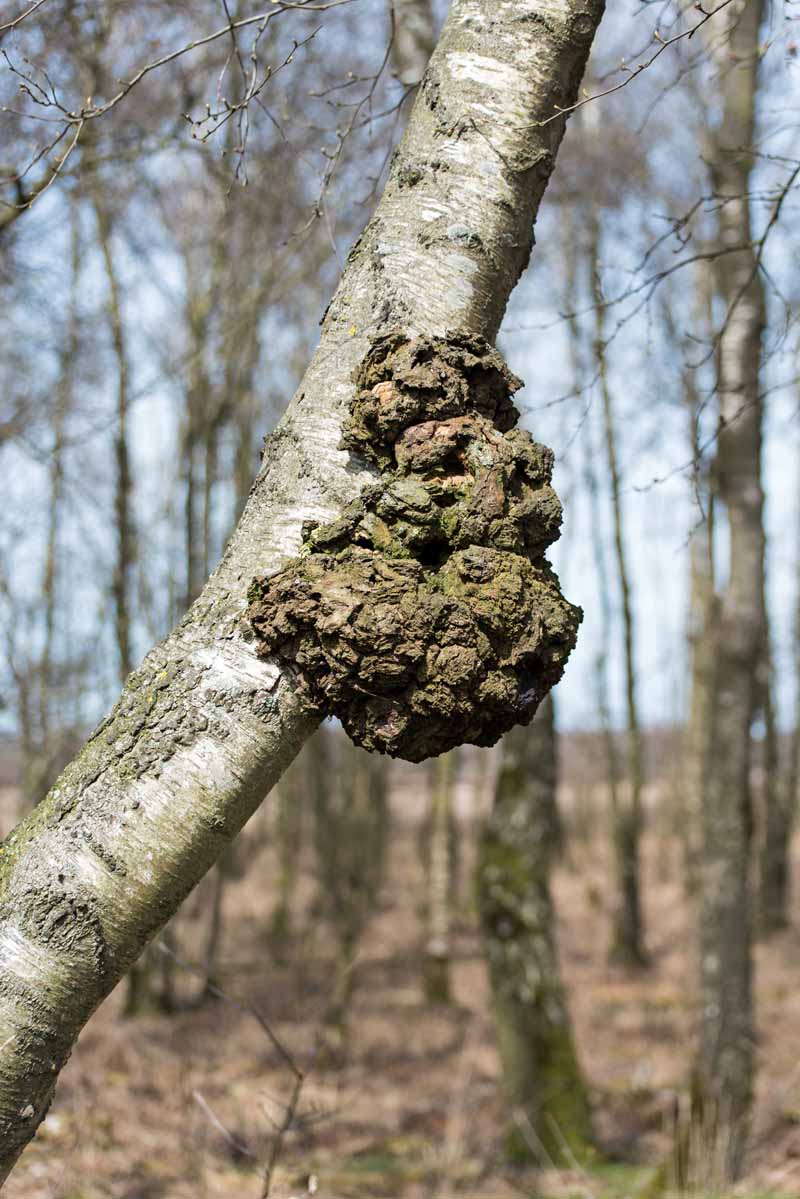
Prevention is your best bet to keep your tree safe from these growths. Keeping the graft union above the soil is critical to preventing the formation of burr knots. With crown gall, try your best to avoid introducing wounds.
Have you been able to save trees afflicted with burr knots or crown gall? Let us know your experience in the comments below.
And read on to learn more about other types of tree disorders and diseases:
- How to Identify, Prevent, and Treat Gummosis on Fruit Trees
- How to Manage Root Rot in Fruit, Nut, and Landscape Trees and Shrubs
- How to Prevent and Control Armillaria Root Rot
© Ask the Experts, LLC. ALL RIGHTS RESERVED. See our TOS for more details. Uncredited photo: Shutterstock.
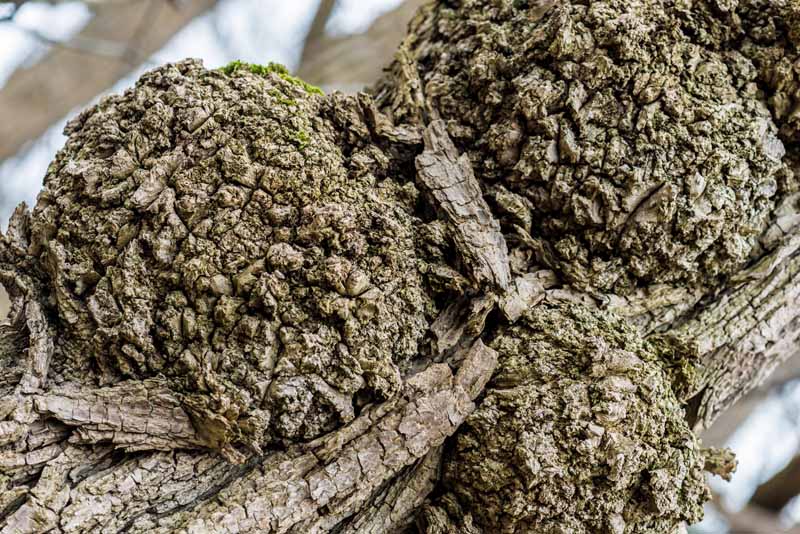
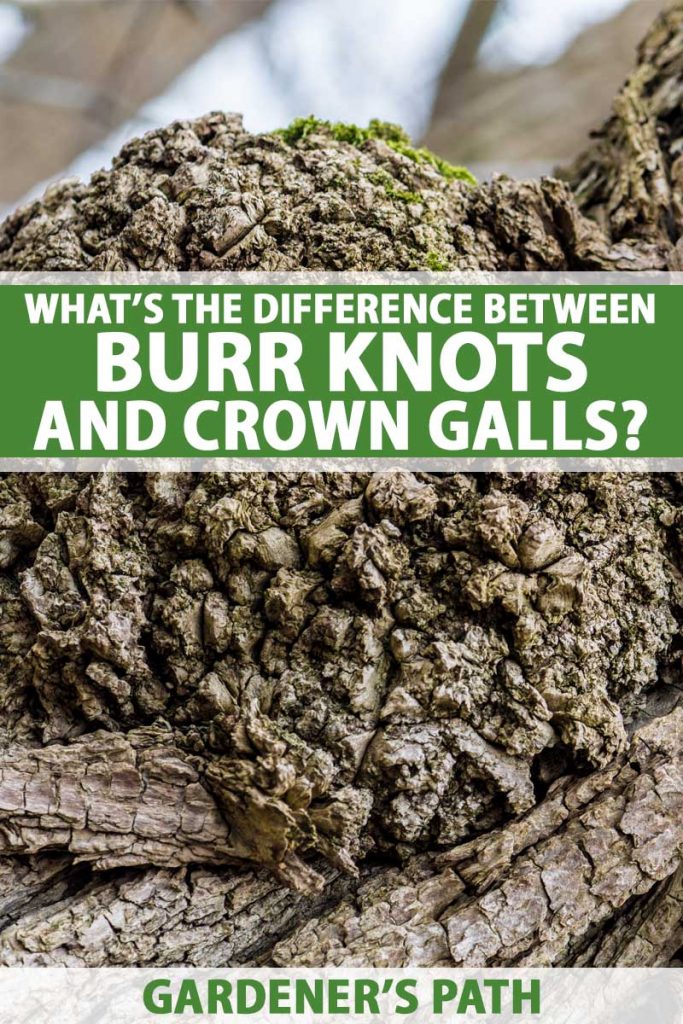
A few times I have wondered what caused those knots. Thank you. I look forward to reading more of your articles.
Hi Jaelene, I am delighted that you found the article informative. Thank you so much for taking the time to post!
I have some apple trees with some sort of infection. Could you help identify it for me please?
Hi Aaron, you can register for our forum and post photos there in the Fruit Tree section.
It’s kind of bare at the moment as we are just getting it started, but our gardening experts can view them there and respond.
Hi, I am a horticultural agricultural specialist in the field of hazelnut trees in Iran.
I am Dr. Hamid Gholami Fakhbi from a university in Iran. I ask the doctor to send and email me good information about hazelnut diseases and necessary recommendations for prevention and control of pathogens in hazelnut tree.
Hi Dr. Fakhbi,
Thank you for your inquiry!
Here is a PDF from the University of California on managing pests and diseases on hazelnut trees. Hopefully, it will provide the information that you need.
We also have an article on raising hazelnuts that discusses pathogens and pests.
Do you know if Eastern filbert blight is a problem in your country? We have an article specifically on that disease, because it is such a problem in the US.
I hope these links provide the information you are looking for.
Hi there, My pear tree is extensively affected and I will need to remove it. Is it safe to plant a new tree in the same place?
Unfortunately the bacteria that causes crown gall can survive for years in the soil. Replanting in the same location is not recommended.
This appears to be an oak, possibly a live oak, which are plentiful on Cumberland Island, the southern most barrier island off the coast of GA. Burls perhaps?
Hi!
would you consider this a Crown Gall? This is on a Bur Oak.
I am totally at a loss. How can I tell whether my young apple tree has burr knot or crown gall growths? I’ve read the article above, and every other article I can find on the internet. The pictures shown on the internet of both problems are all very, very similar; and in the article above most of the pictures aren’t labeled as to which problem is being shown. I don’t know whether to hurry up and cut down, dig up, and burn my 6 year old apple tree before it infects the others nearby; or leave it alone and… Read more »
Hello, if you’d like to attach a few photos to this thread, we can help take a look and determine whether you have galls or burr knots. Galls are less common on the lower part of the trunk, but that doesn’t mean you can eliminate them as a possibility entirely.
I have recently bought some land in the upper midwest and some of the trees have similar bulbous growths. I was trying to figure out what they were and found your article. Very informative – thank you! The growth is typically where the a new branch is coming off of the trunk or another limb of the tree. Any idea what this would fall under?
Hi Heidi, I do believe this is your photo. We’ve been having technical difficulties recently with the upload feature. Hopefully one of our gardening experts will be along shortly to answer your question.
This is a Bartlett pear at a local nursery. I do not know the rootstock or grower. However it did come from CA. Could you please give me your opinion? This is the only one that appears to be this severe. Some of the other trees do look as if the buds are starting to swell, but it is spring here at temperatures are in the 70’s. Thank you in advance for any information you can provide.
Based on the age of the tree and the color of the growths, I’d say that these are galls. They’re common in nurseries.